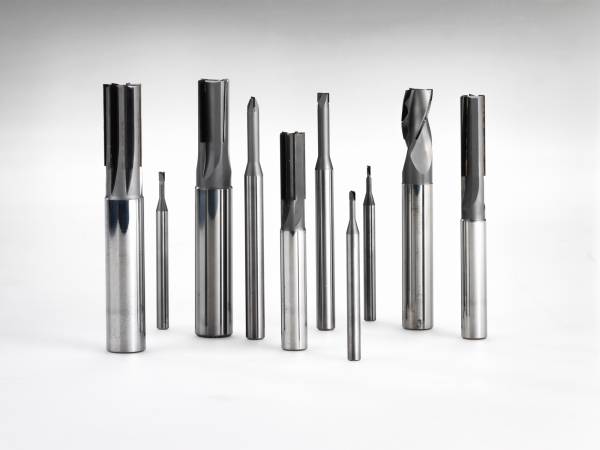+39 029363537

Series: Trends in machine tools and precision tools - Number 5
The Society for Production Engineering and Development (GFE e.V.) Schmalkalden is a research association focusing on tools/metal-cutting technology. During AMB, International Exhibition for Metal Working, which will be held in Stuttgart from 16 to 20 September 2014, the Society´s work will be seen among many exhibitors who are a member or a partner of GFE - for example in the area of cutting edge design or regarding coatings. Prof. Dr.-Ing. Frank Barthelmä, Head of GFE, also regards these two areas and the multifunctionality of tools as the focal points of new products at AMB. GFE and its partners from the metal working industry create innovative products and technologies in joint research and development projects.
Prof. Barthelmä, what are now the main challenges facing manufacturers of precision tools?
Tool suppliers are increasingly being forced to act as technology developers, i.e. users expect them to provide a kind of "all-round carefree package". This involves a solution which includes all technological aspects relating to the tool. There is a need here for a complete production engineering concept which often goes far beyond actual core competencies, especially those of small and medium-sized enterprises. It is not only smaller tool manufacturers who should and must enter increasingly into joint ventures - with partners from other industries, but also with competitors - in order to satisfy the higher demands of users. Related services such as training courses or local consulting services also play an important role in this respect. The tool manufacturer of the future will increasingly be a technology manager with core competence in the area of tools, but also primarily regarding cutting materials, geometries and coatings. Cost problems must also be resolved, especially in the supply of raw materials for tool production. Over the last decade, hard metal has shown what enormous price fluctuations may occur on the world market. The geographical distribution of the corresponding warehouses also gives rise to fears concerning a continuous and affordable supply of these raw materials. The question of alternative cutting materials, e.g. ceramic cutting materials, will therefore be of great interest in the medium term.

What is involved in the ideal metal-cutting process? What role do "intelligent tool concepts" play in this case“?
Terms such as "ideal" and "intelligent" are better suited to marketing language. However, they normally relate to tools and processes which represent a substantial technical or economic improvement thanks to new or unconventional solutions. One example: when large parts are machined, larger bore holes must often be provided after production on the back with countersinking. To date, either the part had to be turned or had to be inserted into the bore hole with a tool holder in order to then affix the required components for the countersink process manually on the tool holder - both very expensive and time-consuming. We therefore developed a tool with swivelled cutting edges which can be inserted into the bore hole. The cutting edges are extended behind the bore hole and the tool is hydraulically supported on the bore hall wall, a sensor checks the cutting edge position and countersinking then takes place. The support is then removed, the cutting edges are retracted and the tool can be extended again. All this takes place without manual intervention and with high quality and cost-effectiveness thanks to the support.
What increased possibilities are offered by hybrid and combination processes?
Process combinations often represent an interesting approach for process optimisation. This also shows that such combinations are typically used in more or less large niche areas. Turn milling, for example, offers great potential in producing special surface structures in addition to its traditional use as a process with high productivity. Important process principles, also as a result of work by our organisation, have already been attained in this respect. However, unanswered questions are still raised by tribology, i.e. the question of how friction, wear and lubrication can be optimised. Another example is the use of ultrasonic assisted machining. This is already an established process when cutting brittle-hard materials such as glass and ceramics. To date, only special applications have been known in machining with geometrically defined cutting edges. However, the process contains great potential, especially in the area of milling of high-strength ductile materials. In special applications it may also be practical to use a laser to heat up the material to be cut. Generally speaking, these and other process combinations represent good approaches for further optimisation of production processes.
Highlight of the industry with 1,300 exhibitors
Around 90,000 trade visitors and 1,300 exhibitors are expected to attend AMB 2014 from 16 to 20 September 2014. Exhibitors will present innovations and further developments from the metal cutting and precision tool industry, as well as chucking tools, CAD, CAM, CAE, software, grinding machines, handling of workpieces and tools, and measuring systems on a gross exhibition area of more than 105,000 square metres. AMB 2014 will be backed by the promotional supporters, i.e. the VDMA Precision Tools Association, the VDMA Software Association and the Association of German Machine Tool Manufacturers (VDW).